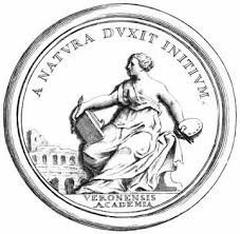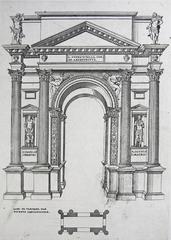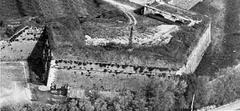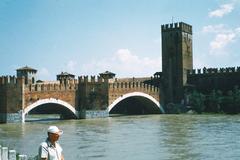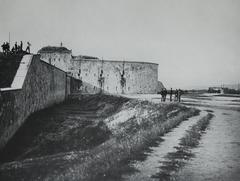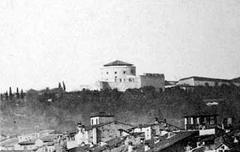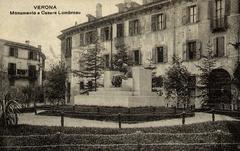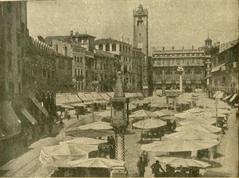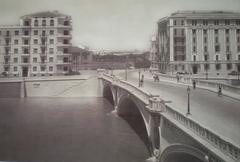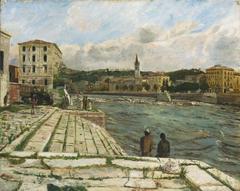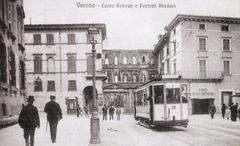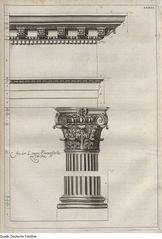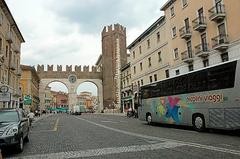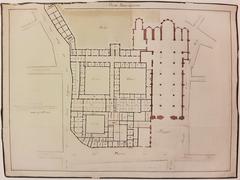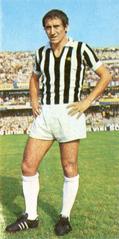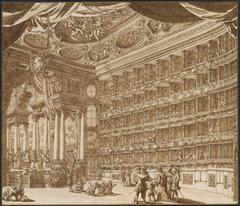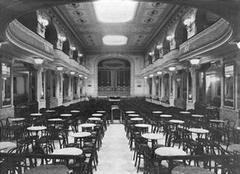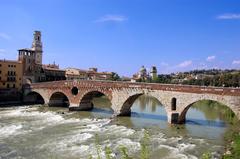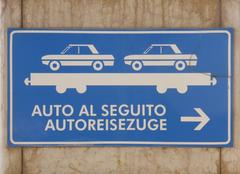Monument to Aleardo Aleardi in Verona, Italy: Visiting Hours, Tickets, and Visitor Information
Date: 14/06/2025
Introduction
Located in the heart of Verona, the Monument to Aleardo Aleardi stands as a distinguished tribute to one of Italy’s most revered 19th-century poets and patriots. Aleardo Aleardi (1812–1878) is celebrated for his impassioned Romantic poetry and his fervent participation in the Italian Risorgimento—the movement for national unification. Erected in 1883, only five years after his passing, this monument honors both his literary accomplishments and his political activism, serving as a tangible link between Verona’s cultural heritage and Italy’s path to nationhood.
The monument is situated in a tranquil public square, making it easily accessible year-round without any admission fee. Its presence enriches Verona’s roster of historical sites and offers an essential stop for literature lovers, history enthusiasts, and anyone interested in the city’s vibrant past. This guide provides a comprehensive overview of the monument’s history, artistic features, cultural significance, and practical information for visitors.
For official details, see Visit Verona and Verona Tourism.
Table of Contents
- Historical Background
- Monument Features and Symbolism
- Visiting Information
- Cultural Impact and Community Role
- Restoration and Preservation
- Frequently Asked Questions (FAQ)
- Conclusion
Historical Background
Origins and Commissioning
The Monument to Aleardo Aleardi was commissioned shortly after his death, with community support reflecting the high esteem in which he was held by the citizens of Verona. The statue was inaugurated in 1883, a testament to the civic pride and the tradition of commemorating cultural icons in public spaces (Visit Verona, Comune di Verona).
Aleardo Aleardi: Life and Significance
Aleardo Aleardi was born in Verona in 1812. He earned a law degree but soon turned to poetry, becoming a leading figure in the Neo-romanticist movement. His works, including “Arnalda di Roca” (1844) and “Il monte Circello” (1856), reflect themes of emotion, national identity, and the struggles of the Italian people. Aleardi was active in the Risorgimento, enduring imprisonment for his anti-Austrian activities and later serving as a deputy and senator in the Kingdom of Italy. His legacy as a poet and patriot is deeply woven into Verona’s identity (Treccani, Wikipedia).
Monument Features and Symbolism
Artistic Elements
Sculpted by Ugo Zannoni, a prominent Veronese artist, the monument showcases a blend of realism and idealism characteristic of late 19th-century Italian sculpture. Aleardi is depicted holding a manuscript, symbolizing his literary achievements, and wearing elegant 19th-century attire. The statue stands atop a marble pedestal, adorned with laurel wreath motifs to signify poetic accomplishment (Museo di Castelvecchio).
The monument’s placement in a quiet public square was intentionally chosen for its reflective atmosphere and proximity to places of personal significance in Aleardi’s life.
Inscriptions
The base of the monument features several inscriptions that commemorate Aleardi’s life and achievements:
- Front: “Ad Aleardo Aleardi / n. 4 novembre 1812 / m. 17 luglio 1878” (Marking his birth and death)
- West side: “I suoi canti avvivarono nei giovani l’amore d’Italia che li trasse alla gloria delle patrie battaglie” (His songs kindled in youth the love of Italy that led them to the glory of battles for the homeland)
- Rear: “Ammiratori ed amici con largo concorso del comune di Verona posero 16 ottobre 1883” (Admirers and friends, with the support of the city of Verona, placed this on October 16, 1883)
- East side: “Prigioniero dello straniero a Mantova e Josephstald, mai cedendo a blandizie o minacce, ebbe invitta costanza, per la libertà” (A prisoner of foreign powers in Mantua and Josephstald, never yielding to flattery or threats, he maintained unwavering resolve for freedom)
These inscriptions encapsulate Aleardi’s poetic influence, steadfast patriotism, and the communal effort involved in erecting the monument (Visit Verona).
Visiting Information
Location and Accessibility
The monument is located in a peaceful square within Verona’s historic center, most commonly identified as Piazzetta Santi Apostoli or Piazza San Nicolò, depending on the source (Comune di Verona). It is a short walk from major attractions like the Arena di Verona and Piazza Bra, and is easily reachable by public transport, taxi, or on foot.
The area is wheelchair accessible, with paved walkways and ramps at the entrances. Parking is available nearby at Parcheggio Arena and Parcheggio Cittadella.
Visiting Hours and Admission
- Hours: Open 24 hours a day, year-round.
- Admission: Free. No tickets or reservations are required.
Tips for Visitors
- Best Time to Visit: Early morning or late afternoon for optimal lighting and a quieter atmosphere.
- Photography: The monument and its leafy surroundings offer excellent photo opportunities.
- Nearby Amenities: Cafés, restaurants, and public restrooms are available in the vicinity.
- Events: Poetry readings and cultural events are occasionally held at the monument, especially on anniversaries of Aleardi’s birth and death (Eventi Verona).
- Guided Tours: The monument is often included in literary and historical walking tours of Verona (Verona Official Tours).
Cultural Impact and Community Role
The Monument to Aleardo Aleardi is more than a commemorative statue—it stands as a symbol of Verona’s literary legacy and the city’s pivotal role in the Italian unification movement. The monument is integrated into school curricula, public readings, and local festivals, fostering community engagement and pride. It is also a focal point on walking tours highlighting Verona’s connection to other literary giants like Dante and Shakespeare (Verona Tourism).
Restoration and Preservation
In recent years, the monument has undergone restoration to address weathering and environmental exposure. These efforts, led by the Verona City Council’s Department of Cultural Heritage, ensure the statue remains a dignified presence in the cityscape for future generations (Comune di Verona).
Frequently Asked Questions (FAQ)
Q: What are the visiting hours for the Monument to Aleardo Aleardi?
A: The monument is accessible 24/7, year-round.
Q: Is there an admission fee or ticket required?
A: No, visiting the monument is completely free.
Q: Is the monument accessible to wheelchair users?
A: Yes, the square and pathways are flat and paved with ramps at entrances.
Q: Are guided tours available?
A: Yes, the monument is featured on many literary and historical walking tours of Verona.
Q: What are the best times to visit?
A: Spring and autumn are especially pleasant, and early morning or late afternoon offers the best lighting.
Conclusion
The Monument to Aleardo Aleardi is an essential stop for anyone exploring Verona’s historical and cultural landscape. It offers a poignant reflection on the city’s literary heritage and the enduring spirit of the Italian Risorgimento. Accessible, centrally located, and rich in symbolism, the monument provides a meaningful experience for visitors of all backgrounds. Whether you’re delving into Italian literature, retracing the steps of the Risorgimento, or simply enjoying Verona’s vibrant streets, a visit to the Aleardi monument will enrich your understanding of the city’s past and present.
For up-to-date information on events, tours, and visiting tips, download the Audiala app or consult the official tourism websites.
(Visit Verona, Verona Tourism, Comune di Verona, Treccani, Museo di Castelvecchio, Eventi Verona)
